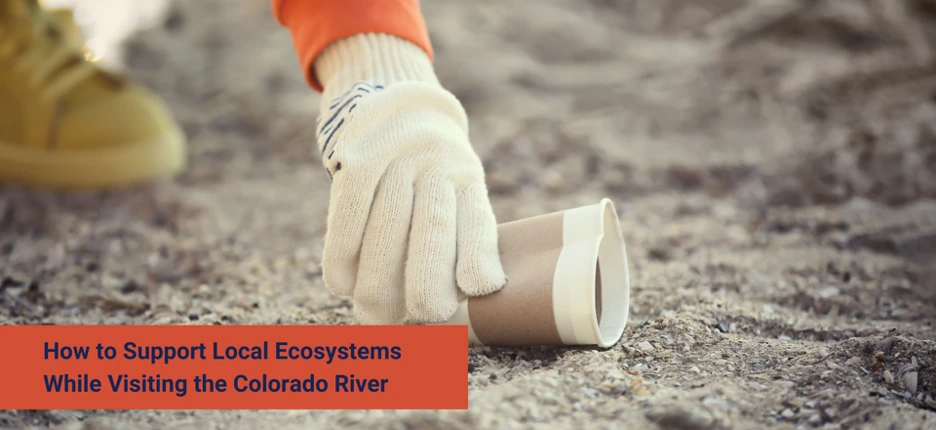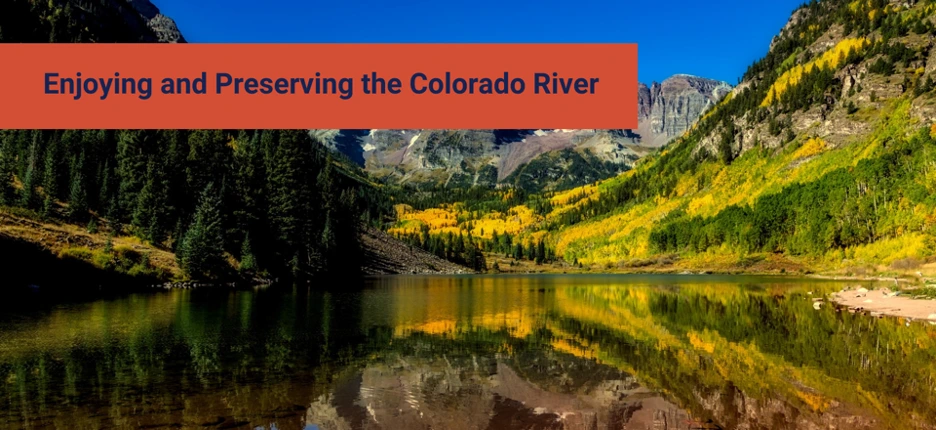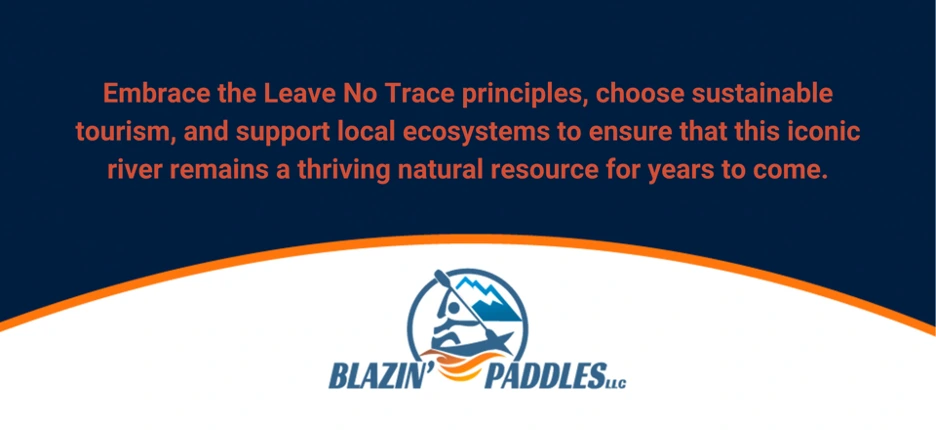How to Support Local Ecosystems While Visiting the Colorado River

The Colorado River is more than just a vital water source; it’s a lifeline for diverse ecosystems, wildlife, and human populations. When you visit this iconic natural wonder, it’s important to recognize the environmental impact tourism can have on its ecosystems. Supporting local ecosystems while enjoying the beauty of the Colorado River is not only a responsible choice but also a necessary step towards sustainable tourism. By adopting eco-friendly practices and embracing a conservation mindset, visitors can help protect and preserve this critical waterway for future generations.

Explore how you can contribute to sustaining the Colorado River’s ecosystems while still enjoying the incredible outdoor experiences it offers. From responsible travel practices to actionable steps that help conserve local wildlife, we’ll show you how small changes can make a big impact on the environment. Let’s dive into the strategies you can use to ensure your trip is not only memorable but also beneficial to the environment.
Supporting Local Ecosystems on the Colorado River

The Colorado River spans over 1,450 miles, crossing seven U.S. states and two Mexican states, making it one of the most important water sources in North America. It supports a vast range of ecosystems, from the desert landscapes of Arizona to the lush forests of the Rocky Mountains. The river is also home to several species of fish, birds, and mammals, some of which are unique to this region.
When you engage in eco-friendly practices while visiting the Colorado River, you help reduce the negative environmental impacts caused by tourism. The choices you make, from the gear you use to the sustainable tourism activities you participate in, play a role in protecting the delicate balance of these ecosystems. Let’s explore the best ways you can contribute to this effort.
1. Practice the ‘Leave No Trace’ Principles
One of the most effective ways to support local ecosystems while visiting the Colorado River is to follow the Leave No Trace principles. These guidelines are designed to minimize the environmental impact of outdoor activities and help maintain the natural beauty of the area. Here are some key points to keep in mind:
- Plan ahead and prepare: Research the area before your visit, including any specific rules or regulations for protecting wildlife and natural habitats.
- Dispose of waste properly: Always pack out everything you bring in. This includes trash, food scraps, and even biodegradable waste, which can still harm local wildlife.
- Respect wildlife: Keep a safe distance from animals and never feed them. Feeding wildlife can disrupt their natural behaviors and put them at risk.
- Stay on designated trails: Avoid trampling vegetation and disturbing sensitive habitats by staying on marked paths.
Adhering to the Leave No Trace principles, you can enjoy the Colorado River responsibly while ensuring that future generations can experience its beauty as well.
2. Use Biodegradable and Eco-Friendly Products
When kayaking, camping, or hiking near the Colorado River, it’s essential to use biodegradable products. Traditional soaps, shampoos, and cleaning products can introduce harmful chemicals into the water, negatively affecting aquatic life and disrupting the balance of the aquatic ecosystems. Instead, opt for biodegradable alternatives that break down naturally and minimize environmental damage.
Additionally, avoid using single-use plastics during your trip. Instead, bring reusable containers, water bottles, and utensils to reduce waste. Plastic pollution is a significant threat to rivers and oceans, so every effort to minimize plastic waste makes a difference.
3. Participate in Local Conservation Efforts
Many organizations along the Colorado River focus on wildlife conservation, river clean-up initiatives, and ecosystem restoration projects. As a visitor, you can participate in these efforts by:
- Joining river clean-up events: Help remove litter from the riverbanks and waterway, contributing to the health of the ecosystem.
- Volunteering for conservation projects: Many non-profit organizations offer volunteer opportunities for tourists to assist with local conservation initiatives.
- Supporting local eco-tourism companies: Opt for tour companies that prioritize environmental conservation and adhere to sustainable practices.
By getting involved in river conservation efforts, you can make a direct and positive impact on the Colorado River’s ecosystems.
4. Choose Eco-Friendly Kayak Tours
If you’re planning to kayak along the Colorado River, consider booking tours with companies that prioritize sustainable tourism. For example, Blazin’ Paddles offers guided kayak tours that promote eco-friendly practices. Their experienced guides provide valuable insights into the river’s ecosystem while ensuring minimal environmental disruption.
Eco-friendly tourism practices include using low-impact gear, following strict environmental guidelines, and ensuring that every visitor understands the importance of protecting the environment during their trip. By choosing a responsible tour operator, you can enjoy the beauty of the Colorado River while supporting efforts to conserve it.
5. Respect and Protect Local Wildlife
The Colorado River is home to a diverse range of wildlife, including endangered species such as the razorback sucker fish and the southwestern willow flycatcher. When visiting the area, it’s crucial to respect local wildlife and avoid behaviors that could harm their habitats. Here’s how:
- Keep your distance: Never approach or disturb wildlife, especially during sensitive times such as breeding or nesting seasons.
- Do not feed wildlife: Feeding animals can lead to dependency on humans and disrupt their natural diet, which can have long-term effects on their survival.
- Avoid loud noises: Excessive noise can scare away animals or disrupt their natural behaviors, so be mindful of your surroundings and keep noise levels to a minimum.
Protecting wildlife while visiting the Colorado River ensures that these species can thrive in their natural habitats for years to come.
6. Advocate for River Conservation
Beyond your visit, you can continue to support the Colorado River by advocating for its protection. This might include:
- Donating to conservation organizations: Many non-profits work tirelessly to protect the Colorado River and its ecosystems. Consider making a donation to support their efforts.
- Raising awareness: Share your experiences and the importance of sustainable travel on social media, encouraging others to follow eco-friendly practices.
- Supporting legislation: Advocate for policies that protect the Colorado River from pollution, overuse, and other threats.
- Get involved in local and national conservation efforts to ensure long-term protection of this vital resource.
Enjoying and Preserving the Colorado River

Visiting the Colorado River provides an incredible opportunity to connect with nature and experience the beauty of its diverse ecosystems. However, it’s crucial to recognize the responsibility that comes with enjoying such a delicate environment. By adopting eco-friendly practices, supporting local conservation efforts, and respecting wildlife, you can ensure that your trip not only leaves a minimal environmental footprint but also contributes to the ongoing preservation of this natural wonder.
Whether you’re kayaking with Blazin’ Paddles or exploring the surrounding areas on foot, remember that every action you take has an impact. From using biodegradable products to participating in river clean-up initiatives, you can make a difference.
As visitors, we have the power to protect and preserve the Colorado River for future generations. Embrace the Leave No Trace principles, choose sustainable tourism, and support local ecosystems to ensure that this iconic river remains a thriving natural resource for years to come.

